Clyde Tombaugh: The astronomer who discovered Pluto
From farm boy to cosmic pioneer: The life and legacy of Clyde Tombaugh.
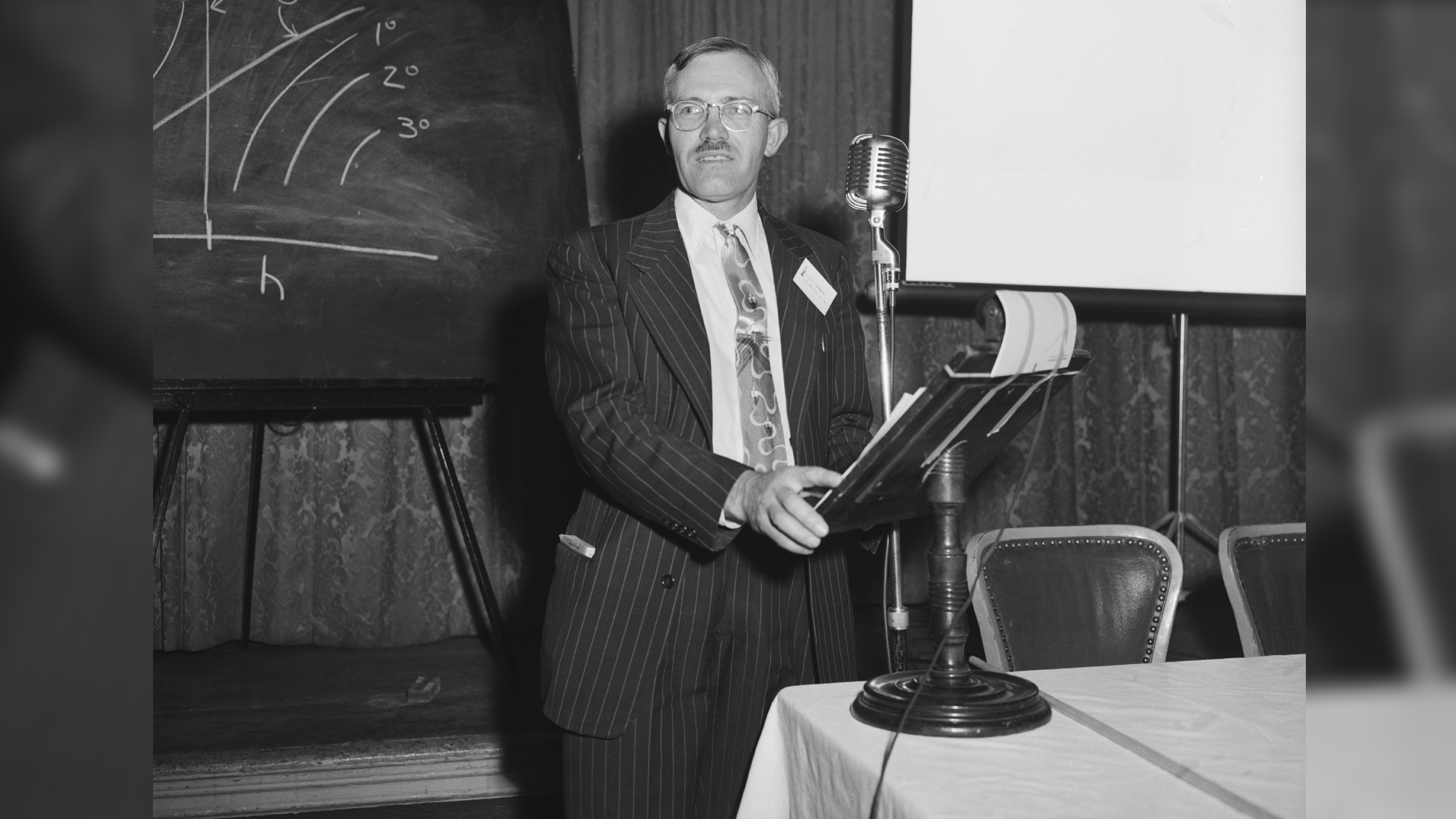
When Clyde Tombaugh built his first telescope at the age of 20, he could not have known it was setting him forward on a path that would eventually lead to the discovery of the first known dwarf planet, Pluto. Let's take a look at the life of this amazing person.
Early life and family
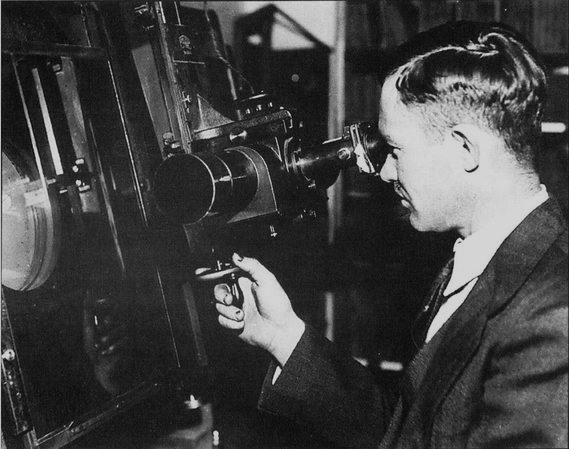
Clyde William Tombaugh was born near Streator, Ill., on Feb. 4, 1906. His family purchased a farm near Burdett, Kan., while he was still young, where a hailstorm ruined his family's crops and put an end to his hopes to attend college at the time.
In 1928, the amateur astronomer was offered a job at Lowell Observatory in Arizona, where he discovered Pluto. In 1934, he married Patricia Edson. They had two children, Annette and Alden.
Tombaugh earned his bachelor's and master's degrees in astronomy from the University of Kansas, working at the observatory during the summers.
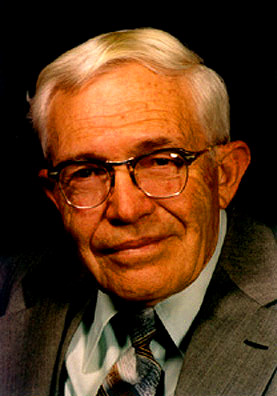
Tombaugh remained at Lowell Observatory until the advent of World War II, when he was called into service teaching navigation to the U.S. Navy at Arizona State College. After the war concluded, he worked at the ballistics research laboratory at White Sands Missile Range in New Mexico. From 1955 until he retired in 1973, he taught at New Mexico State University.
Tombaugh passed away at his home in Las Cruces, N.M., on Jan. 17, 1997.
An avid amateur astronomer
Unimpressed with store-bought telescopes, Tombaugh constructed his first telescope at the age of 20, grinding the mirrors himself. Over the course of his life, he built more than 30 telescopes.
In 1928, he put together a 23-centimeter reflector out of the crankshaft of a 1910 Buick and parts from a cream separator. Using this telescope, young Clyde made detailed observations of Jupiter and Mars, which he sent to Lowell Observatory in hopes of garnering feedback from professional astronomers.
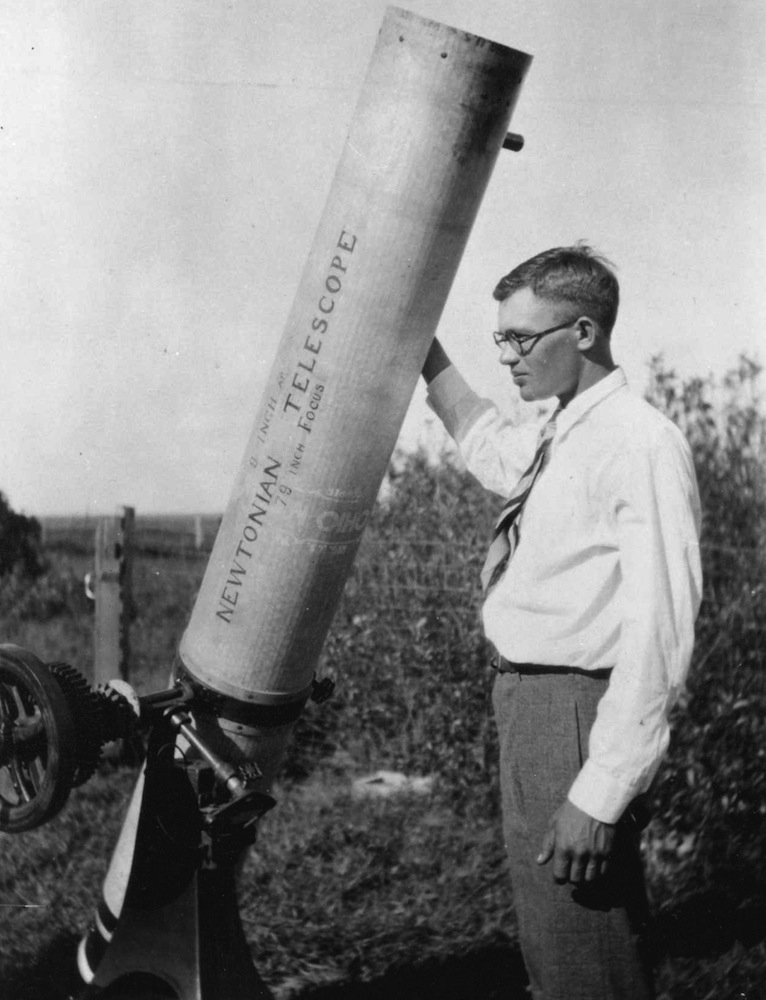
Instead of receiving constructive criticism, Tombaugh was instead offered a position at the observatory. The staff had been searching for an amateur astronomer to operate their new photographic telescope in search of, among other things, the mysterious Planet X.
Not long after its discovery in 1781, the new planet Uranus was found to have strange movements that could only be attributed to another body. Neptune's discovery in 1846 somewhat accounted for the orbit, but there were still discrepancies that led scientists to conclude yet another planet existed.
In 1894, businessman Percival Lowell built the Lowell Observatory to study Mars. In 1905, he turned the telescope toward the search for the elusive Planet X, though he died before the new planet could be found.
When Tombaugh was hired in 1929, he joined the search for the missing planet. The telescope at the observatory was equipped with a camera that would take two photographs of the sky on different days. A device known as a blink compactor rapidly flipped back and forth between the two photographs. Stars and galaxies essentially remained unmoving in the images, but anything closer could be visually identified by its motion across the sky. Tombaugh spent approximately a week studying each pair of photographs, which contained over 150,000 stars, and sometimes nearly a million.
On Feb. 18, 1930, Tombaugh noticed movement across the field of a pair of images taken a month beforehand. After studying the object to confirm it, the staff of Lowell Observatory officially announced the discovery of a ninth planet on March 13.
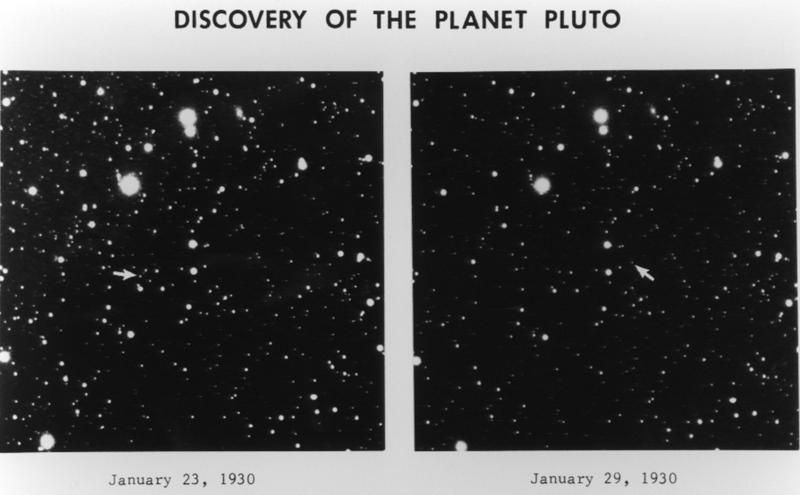
With the discovery came the right to name the new body, so the staff opened up a worldwide call for suggestions. Eleven-year-old Venetia Burney of England suggested the name Pluto because the dark, distant planet resembled the abode of the Greek god of the underworld.
Pluto endured as a planet for more than 70 years. As astronomical instruments became increasingly precise, however, other similar-sized objects were found beyond the orbit of Neptune. In 2006, almost a decade after Tombaugh's death, the International Astronomical Union reclassified Pluto as a dwarf planet.
The New Horizons mission carries some of Tombaugh's ashes on board as it travels to Pluto and beyond.
Although most famous for the discovery of the most controversial body in the solar system, Tombaugh also found a comet, hundreds of asteroids, and several galactic star clusters over the course of his career.
Join our Space Forums to keep talking space on the latest missions, night sky and more! And if you have a news tip, correction or comment, let us know at: community@space.com.
Get the Space.com Newsletter
Breaking space news, the latest updates on rocket launches, skywatching events and more!

Nola Taylor Tillman is a contributing writer for Space.com. She loves all things space and astronomy-related, and always wants to learn more. She has a Bachelor's degree in English and Astrophysics from Agnes Scott College and served as an intern at Sky & Telescope magazine. She loves to speak to groups on astronomy-related subjects. She lives with her husband in Atlanta, Georgia. Follow her on Bluesky at @astrowriter.social.bluesky
